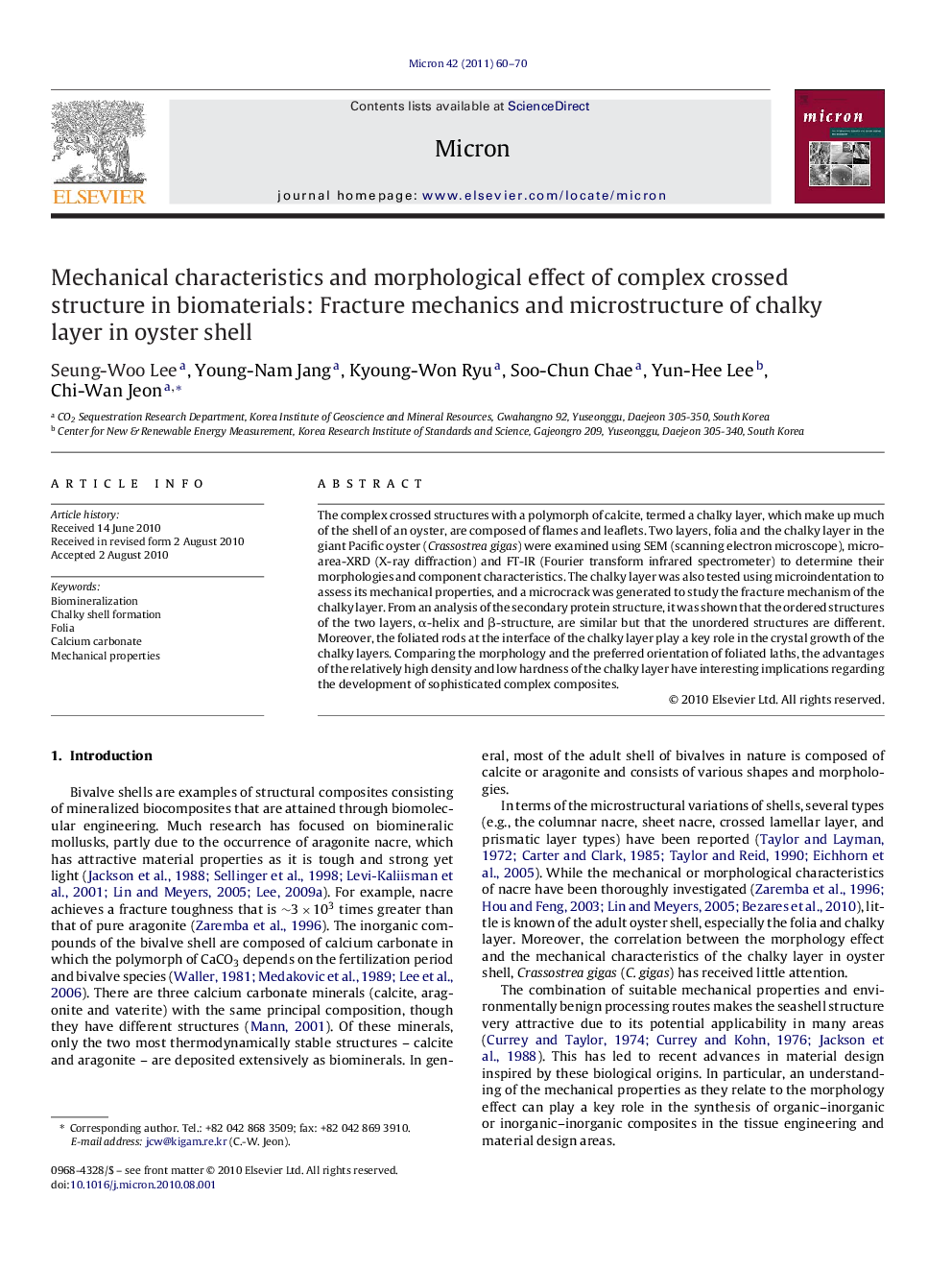| Article ID | Journal | Published Year | Pages | File Type |
|---|---|---|---|---|
| 1589321 | Micron | 2011 | 11 Pages |
The complex crossed structures with a polymorph of calcite, termed a chalky layer, which make up much of the shell of an oyster, are composed of flames and leaflets. Two layers, folia and the chalky layer in the giant Pacific oyster (Crassostrea gigas) were examined using SEM (scanning electron microscope), micro-area-XRD (X-ray diffraction) and FT-IR (Fourier transform infrared spectrometer) to determine their morphologies and component characteristics. The chalky layer was also tested using microindentation to assess its mechanical properties, and a microcrack was generated to study the fracture mechanism of the chalky layer. From an analysis of the secondary protein structure, it was shown that the ordered structures of the two layers, α-helix and β-structure, are similar but that the unordered structures are different. Moreover, the foliated rods at the interface of the chalky layer play a key role in the crystal growth of the chalky layers. Comparing the morphology and the preferred orientation of foliated laths, the advantages of the relatively high density and low hardness of the chalky layer have interesting implications regarding the development of sophisticated complex composites.
